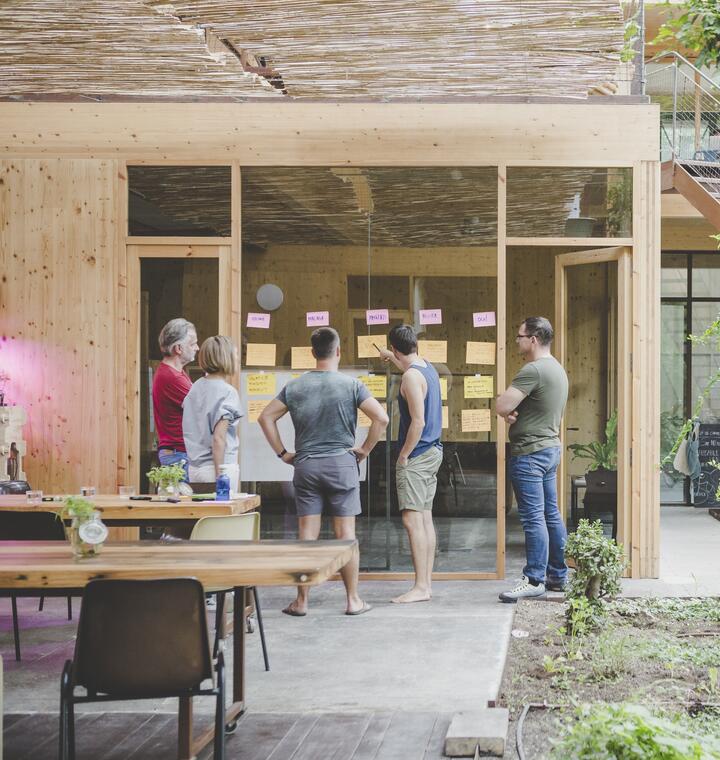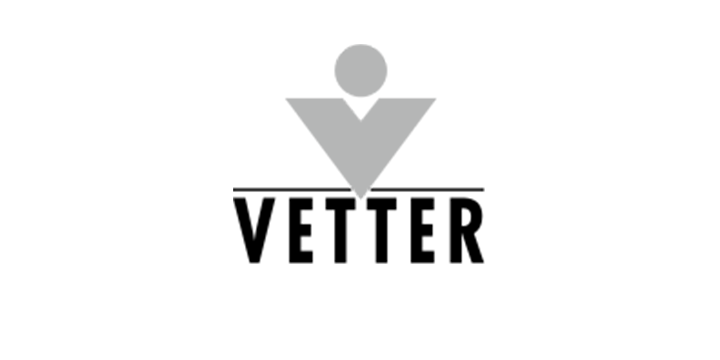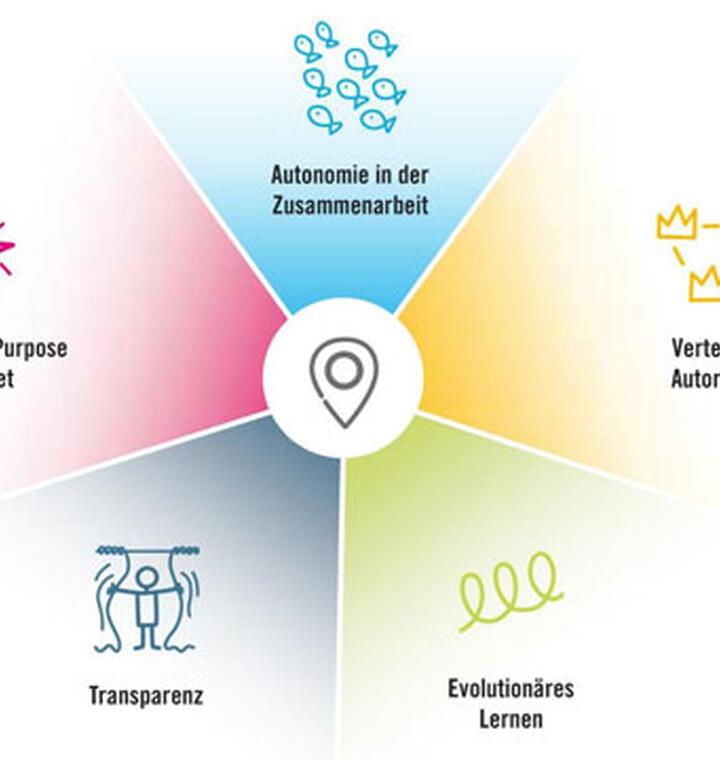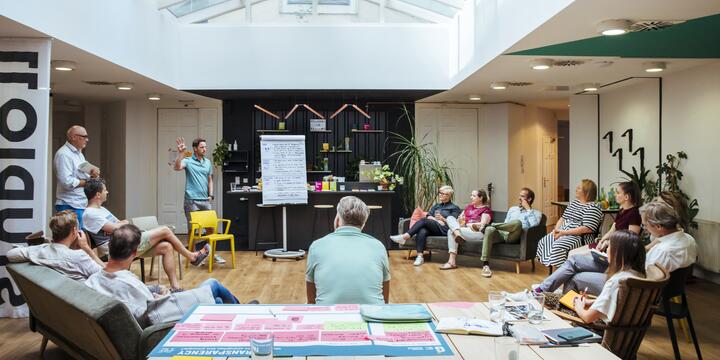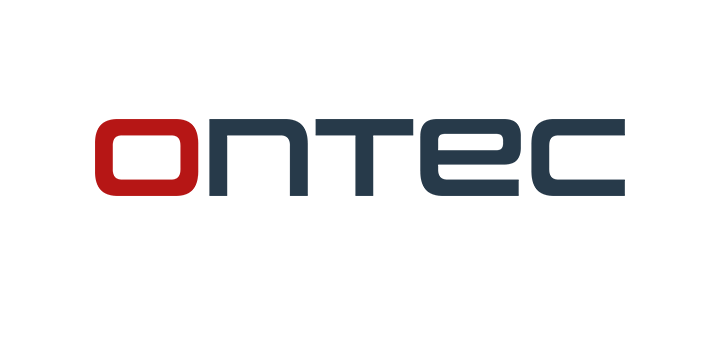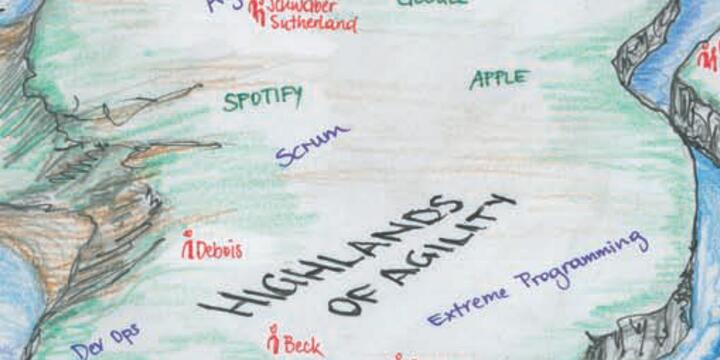Navigating your Organization in Times of Disruptive Change
(c) Cris DiNoto via Unsplash
On Friday, March 13, 2020, the Austrian government announced the “biggest crisis since the second world war” and explained the measures to slow the spread of the Coronavirus. Major parts of public life where stopped: the majority of shops, bars, restaurants, schools, universities and so on. Consecutively, air traffic was basically stopped, strict border controls started. People should “self-isolate” and have social contacts only with the people they live with.
Not surprisingly, these announcements put a consulting business like ours into a situation where basically all client work was questioned — the majority of our work is done in face-to-face settings. Within days, revenues at dwarfs and Giants dropped by more than 85%. Our purpose is to support organizations to become more responsive and navigate in VUCA contexts. So here is the ultimate challenge and proof of the pudding: How does a self-organized system like dG respond? What works, where does the setup fail? Here is a quick sharing of what we did and learned within the first two weeks.
We’re all in this together.
One of our basic principles — proposed by Karl Weick quite a while ago — is “react strongly to weak signals”. Hence, conversations about possible impact of the spread of COVID-19 were ongoing within dG for a while before the announcement. However, the announcement as such triggered a series of actions that were important to respond quickly.
In order to move fast, the Lead Link of the General circle as well as the Client Services circle (Consulting activities) and the Finance role met. (Please note: In Holacracy organizations, Lead Links could be viewed as stewards of circles and accountable for resource allocation and prioritization. If you want to understand in more detail how we are set up, check this blogpost on “1000 days of dG” or see our Holacracy structure on GlassFrog here.) The aim was to quickly arrive at different scenarios based on assumptions we phrased back then.
We built our scenarios on the following assumptions:
- We assume that the spread of the virus will severely impact business activities of our clients in basically all our markets for several weeks, very likely until summer.
- The crisis will shift attention from organizational development processes (our core work) to crisis management and survival mode in companies.
- The overall economic impact will increase the cost-sensitivity and trigger following cost-reduction measures of companies at least until the end of the year, if not longer — resulting in lower budgets for external support of organizational development work.
- We therefore assume very little revenue from April to June (and after that, school holidays will follow, usually a slow season for our work) and increasing revenues starting September 2020.
- We are all in this together. Any measures taken will be far more effective if we get commitment of all partners and employees involved.
Relax, nothing is under control…
After calculating six different scenarios considering all available measures including state-support we distilled two basic scenarios that would basically ensure survival of dG and sustain a minimum income for individual partners to cover their cost of living: A “worst case” scenario with almost no revenue till the end of this year and a “realistic” scenario with returning revenues by autumn. Additionally, we packed the necessary measures into a very concrete proposal on how to move on:
- Reduce work time for all contracted employees to the maximum cut of 10% and formally implement short work (non-partners). Partners take over role-work of employees wherever needed and possible.
- Reduce monthly payments of profit units of all partners to appr. 30%, providing advice that further distribution of profit at end of year is unlikely. Partners are warned so that they can take precautions for their own financial situation.
- Apply for state-backed loan to safeguard liquidity.
- Commit to a strict cost-cutting initiative.
In a next step we shared these scenarios and the proposal in the General Company Circle: We did this pre-selection of two scenarios in the group of three roles in order to reduce complexity and focus communication to the broader circle to a meaningful essence. Transparency through the advice-based decision making mode within the GCC should help us to move quickly. The proposal was perceived well, we integrated some feedback and called in a virtual “All Hands”-meeting on the following day to share the assumptions and proposal with all dG members. The entire dG staff met virtually. We talked through the proposal and answered all clarifying questions. We invited people to sleep over the proposal and asked them to raise their objections — transparent for all in a specified Slack channel. The evening after, we held an Anchor Circle meeting where we invited all partners to raise objections. Four objections were raised (two of them regarding already contracted personnel development measures and two about the reduced monthly payments that might endanger sufficient income for people to cover their cost of living). We used a Consent decision making process to integrate these objections and amended the proposal where needed. Thus, all objections could be integrated.
COVID-19 triggered a massive need for adaption, even for organizations with high learning capability. In times of crisis, is it possible to stay within the framework of an adaptive organization? Or is it throwing us back to the state of “securing survival”? (Slide from the virtual next:pedition Community Meet-Up, March 24, 2020)
Dynamic-Robust Organizing
Apart from these decisions, to ensure survival we took several measures to tackle important questions:
We set up additional „dynamic steering“ formats for “active sensing” on a very regular basis. Bring as many perspectives / observations into the communication flow as possible. We meet and exchange regularly what we observe at clients, on the market in general, other important contexts to test our assumptions and draw conclusions on how to move on.
We amended both, our current strategies as well as our Governance to foster alignment and maintain the focus on what is important now. Leveraging our role-based setup for these quick iterations supports us in accounting for the new situation. After taking care of our housekeeping for some (intense) days, we turned our attention back to our clients, coming up with proposals how to jointly steer within the running projects and how to support them in the current context of Covid-19.
... and eventually stop some of them in the light of the emerging situation? The General Circle and the Client Services Circle meet far more often to adapt priorities on a weekly basis and allocate resources accordingly. Additionally we reviewed our Company Focus Board (a Kanban Board to prioritize our resources across the different initiatives) and put everything on hold that is not serving at the moment.
Two additional slack channels have been established: One for dealing with the need for information on COVID-19, political decisions and societal events, which might impact our business. Another one to monitor the very diverse consequences of the crisis for our clients in various industries. Additionally, we added new roles like the Transparency Guardian (on Glassfrog) accountable for smooth and transparent communication of all activities and decisions to all dG members.
We check-in virtually as dG tribe once per week to address the need of belonging and empathy for each other in acknowledging the different speeds to adapt to this new reality.
So what have we learned so far?
The structural setup works — and is easily adjustable.
Before the crisis, our Anchor circle was more or less just a construct — not really vivid. Yet, in the last week we leveraged its power as integration point of the interests of people, the organization and the investors. All major decisions to ensure our survival were taken there with Consent decision making which proved to be smooth and fast.
Distributed authority in roles and transparent decision making modes are crucial to move fast.
Roles with accountabilities for strategy, priorities and resource allocation take the stage far more obvious — which might easily be interpreted as “Leaders take over”, but is highly functional. It is almost comparable to centralizing some decision making authority and clearly indicates that distributed authority does not mean a basic democracy and involvement of each and everyone to get to a point.
A high degree of role clarity prevents from a reflex of “the founders take over”.
It was clear which roles held the accountabilities to come up with scenarios to decide on how to move on. This helped a lot and provided orientation for others. However, it is obvious that there are people who immediately feel more responsible for the whole whereas others do not sense this right away. They will show up quickly.
Disruptive changes are emotional.
Even if measures are taken with the best intentions, stress patterns of individuals show up quickly. They can lead to very emotional reactions, e.g. of being not involved enough, being not informed enough or finger pointing or anything the like. Our practice of clearing the air quickly served us well to tackle arising issues right away.
Communication is everything.
If you think you communicated enough, it is for sure still too less. When you want to shape a new reality there is extraordinary more need to build common ground. This includes hearing and listening to each other’s perspectives, making all reasoning and assumptions behind decisions transparent. Especially if it is in written form.
So — how did your organization respond? We are eager to hear what worked for you. We will keep you posted what we will iterate as we go.
This article was originally published by Gerald Mitterer on Medium on March 31, 2020






